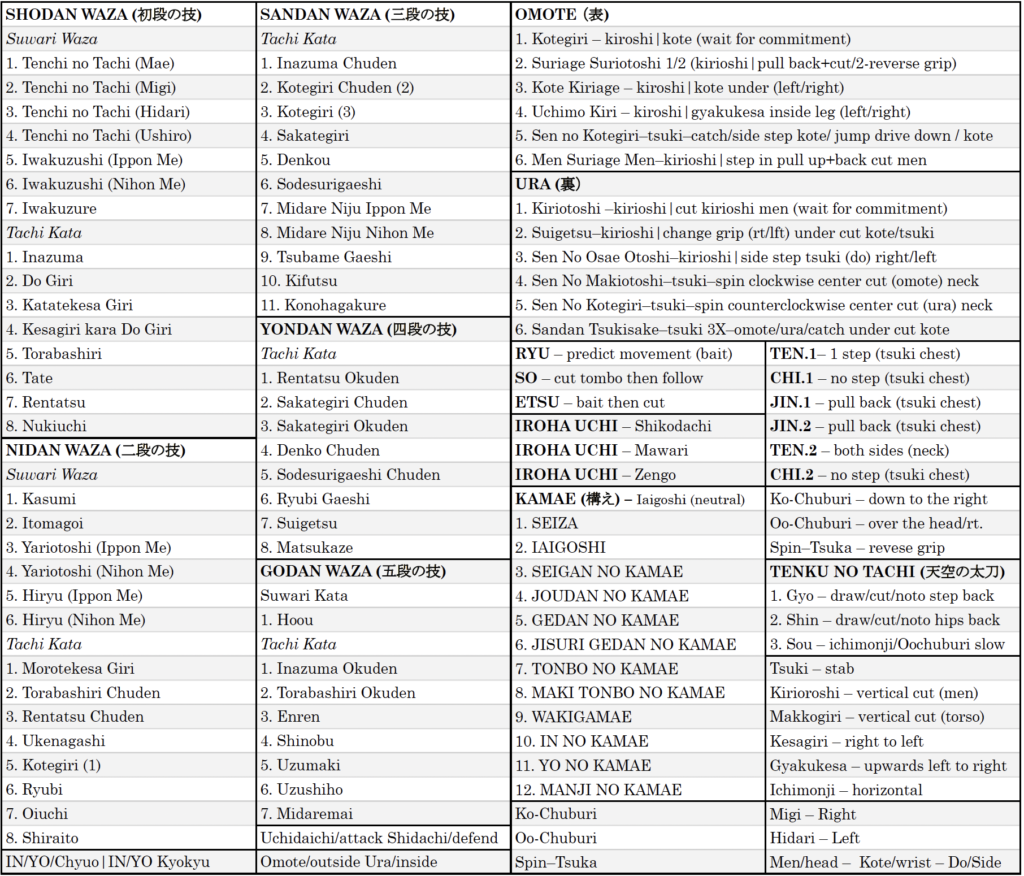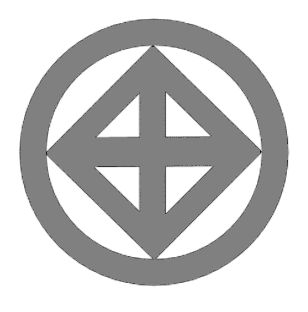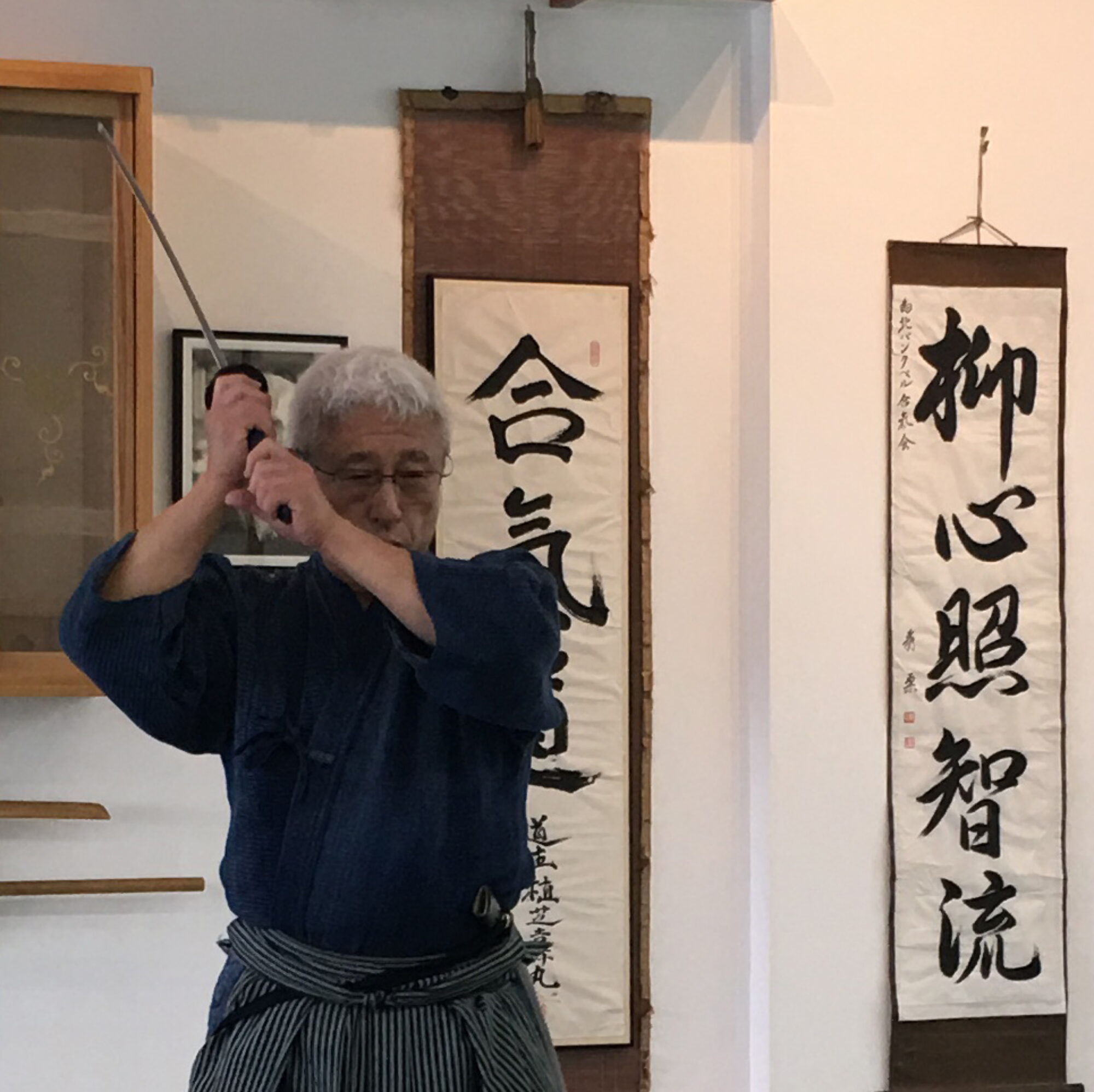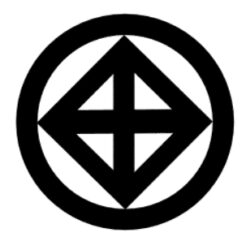
Kata (型 or 形 literally: “form”) is a Japanese word describing detailed choreographed patterns of movements practiced either solo or in pairs. Each one is designed to play out a different combat scenario. Kata are used in many traditional Japanese arts such as theater forms like kabuki and schools of tea ceremony (chadō), but are most commonly known for the presence in the martial arts.
In iaido the basic concept is to visualize your imaginary opponents and defeat them.
KUMITACHI (組太刀:くみたち)
Are paired practice (2 person forms) that allow us to practice the actual sword techniques (Waza) hidden in the kata. Typically these forms are performed using bokutō; however, it is also practiced at high level with habiki or shinken. Kumitachi are therefore a real plus for serious Iaido practitioner since they allow them to visualize and bridge the gap between standalone kata practice and partner interactive forms. Kumitachi allow to deepen and enrich the knowledge of concepts hard to understand while only working with kasso teki (invisible opponent): – Maai (間合い) Distance/Timing – Seme / Ki seme – Zanshin – Metsuke
TAMESHIGIRI (試し斬り)
Tameshigiri (試し斬り, 試し切り, 試斬, 試切) is the Japanese art of target test cutting. This practice was popularized in the Edo period (17th century) for testing the quality of swords and continues through the present day. This practice is always done under extremely close supervision to ensure safety. The target usually consists of rolled bamboo mats which have been soaked ahead of time. Sometimes we also use pieces of raw bamboo. Our school doesn’t cut “patterns”, instead we cut directly from our kata.
Inazuma (Shoden)
Iwakuzushi (Ippon Me)
Kazumi
Kote Giri
Tenku no tachi
Ryubi
Kumitachi
Tenchi no tachi Mae
Tiki Shewan Sensei Embu
Yahagi Sensei Waza
Seminar from outside Barcelona:


